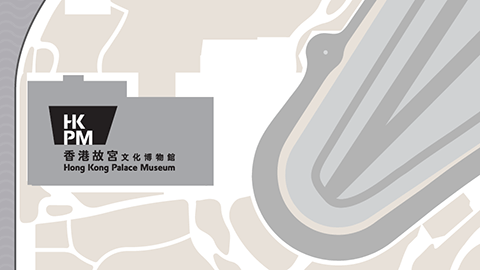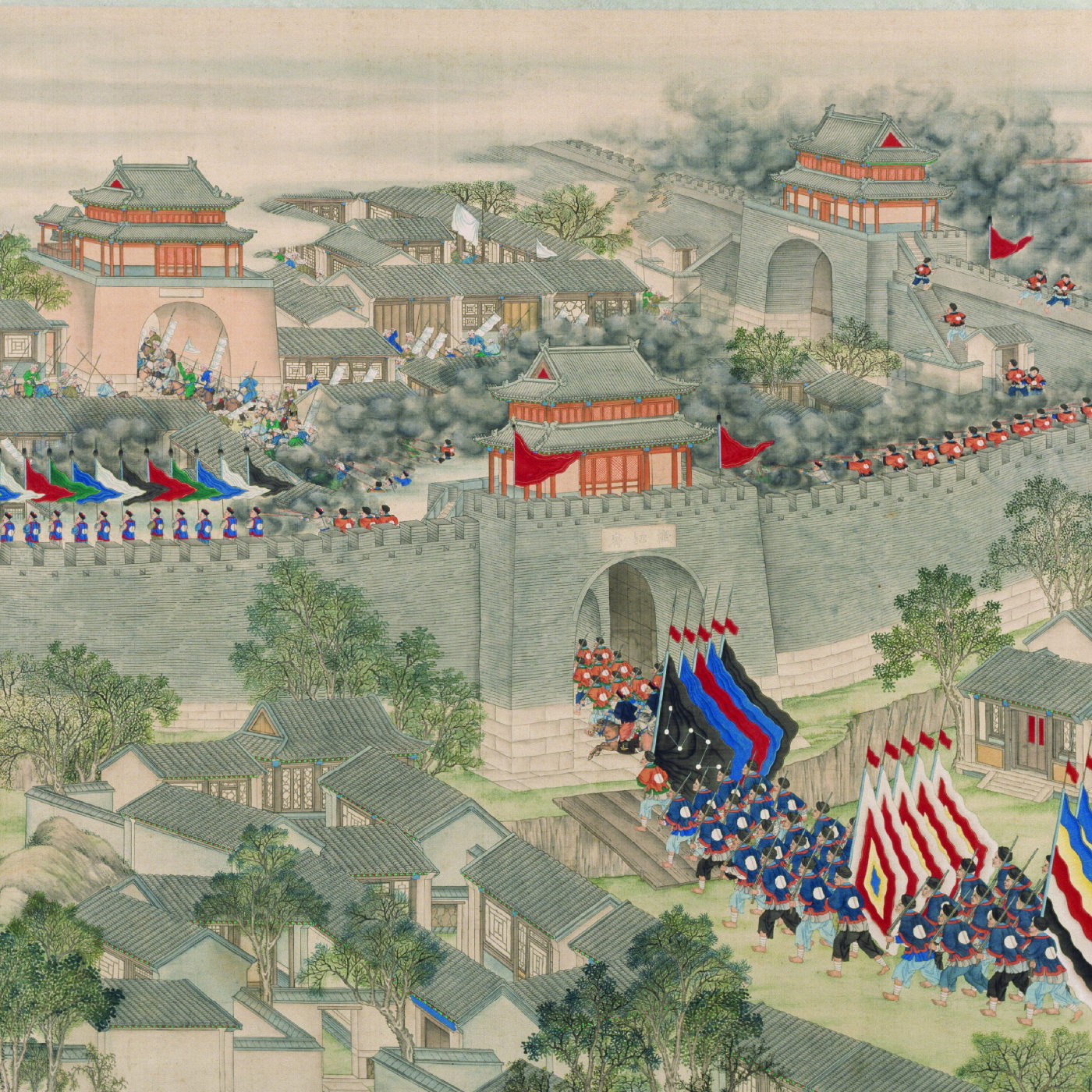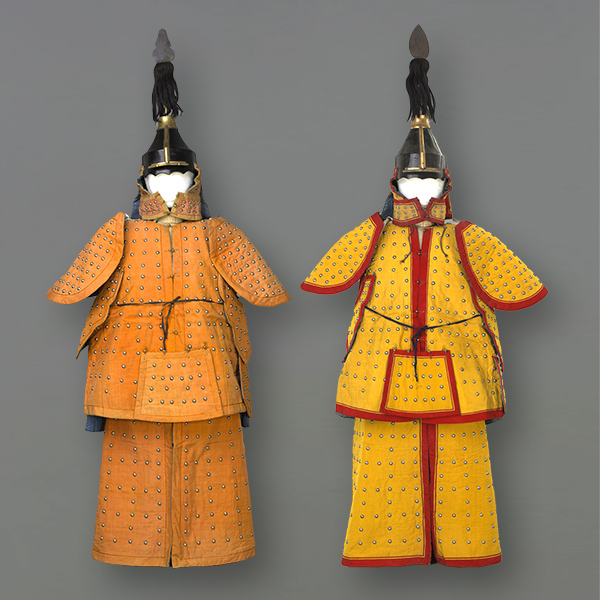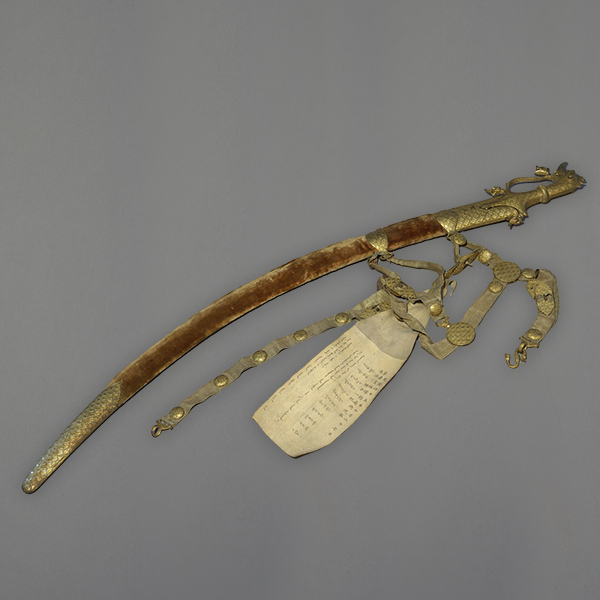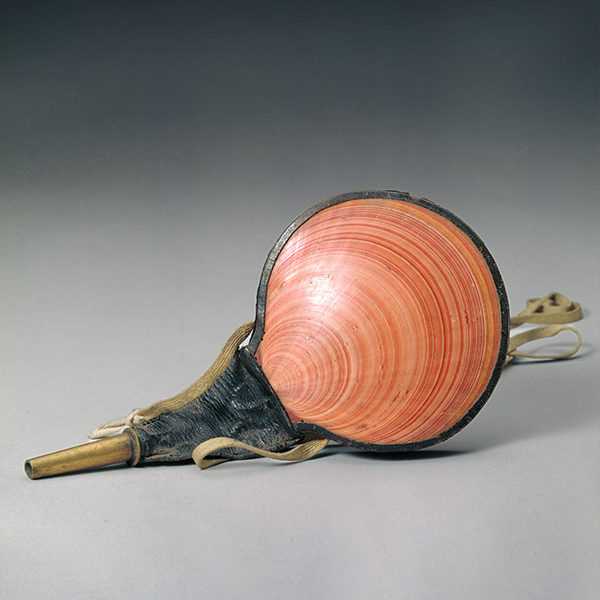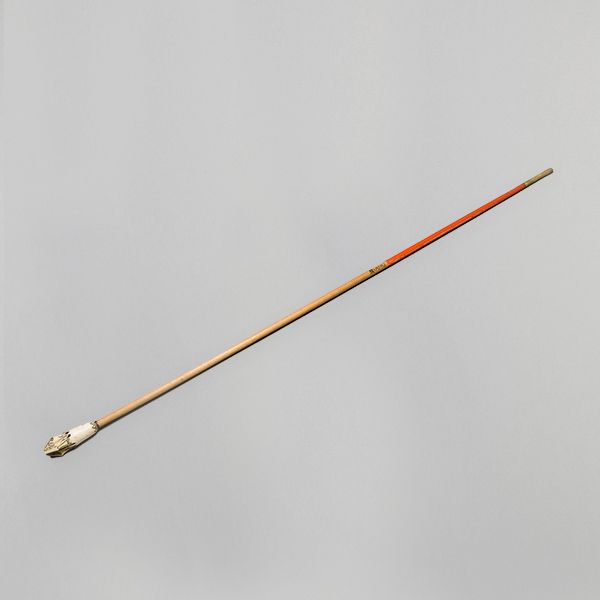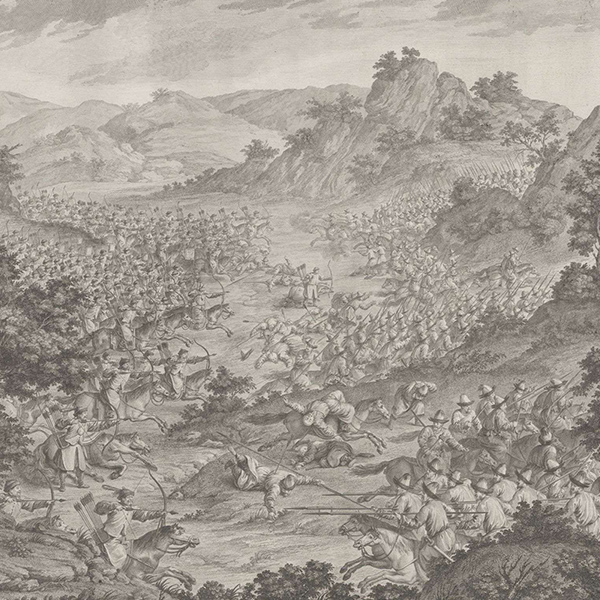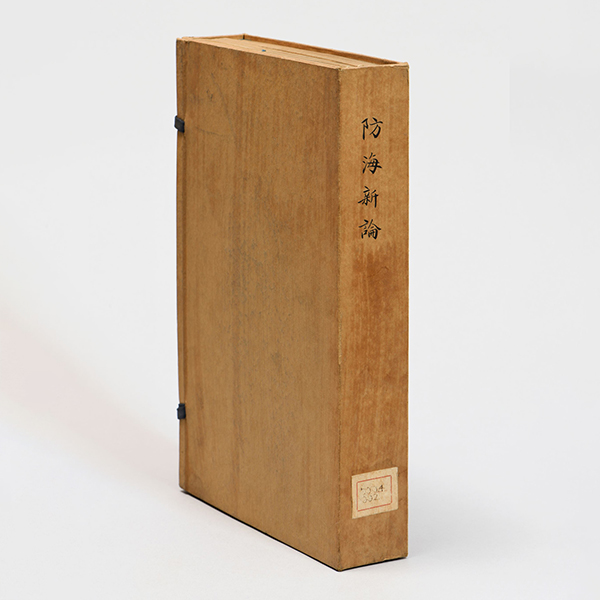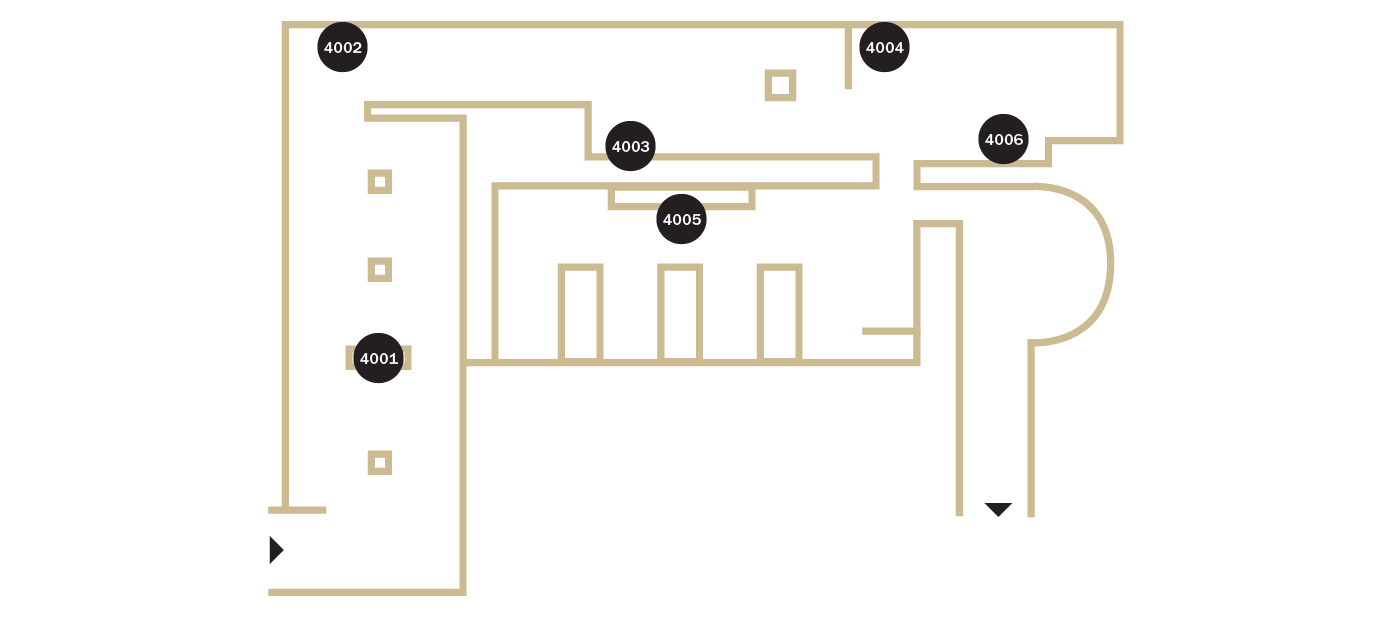Can you notice the difference between these two sets of Eight Banners armour of the Qing dynasty on display? The “Eight Banners” were administrative organisations that integrated military, civilian, and management functions. At their early establishment, the organisations’ flags were of four colours: yellow, white, red, and blue, hence referred to as "Plain Yellow", "Plain White", "Plain Red", and "Plain Blue". As they expanded, Nurhaci established an additional four banners in 1615, during the Wanli period of the Ming dynasty, with flags adorned with red or white borders, known as "Bordered Yellow", "Bordered White", "Bordered Red", and "Bordered Blue", collectively called the "Eight Banners". Therefore, the costumes of different banners were distinguished by both colours and borders.
These two sets of armour were produced in 1756 during the Qianlong period of the Qing dynasty, after the emperor established new standards for the Eight Banners armours. Some parts were made of cotton instead of metal, making them lighter and versatile for body movement. According to historical records, by the end of that year, over 18,000 new sets of Eight Banners armour were made in places such as Jiangning, Suzhou, and Hangzhou, and were sent to the Qing court's Armoury for Grand Military Reviews and other military exercises.
